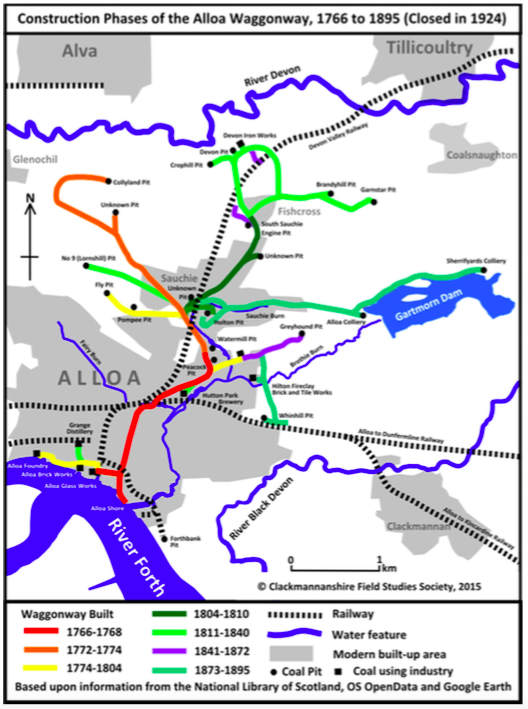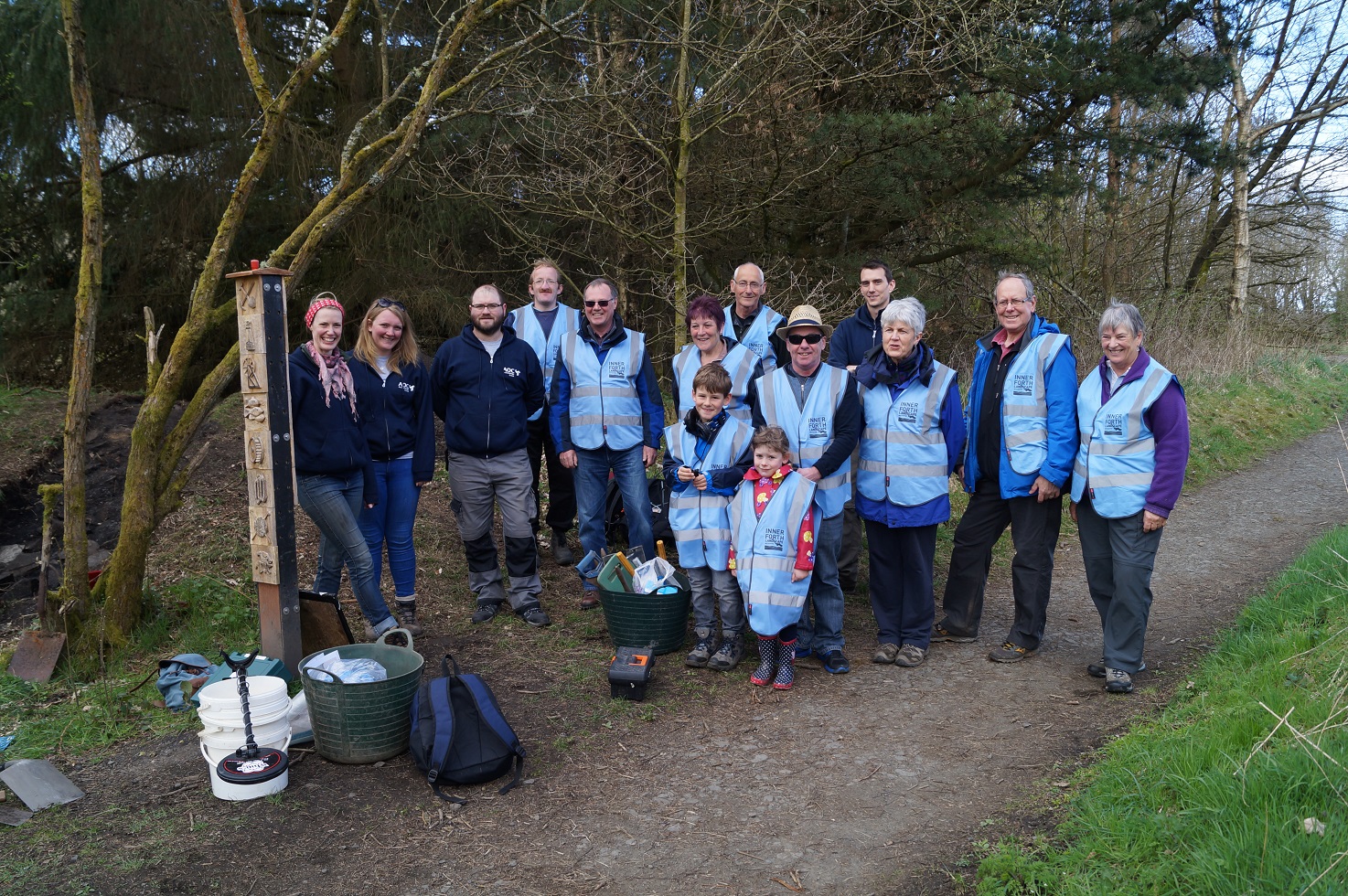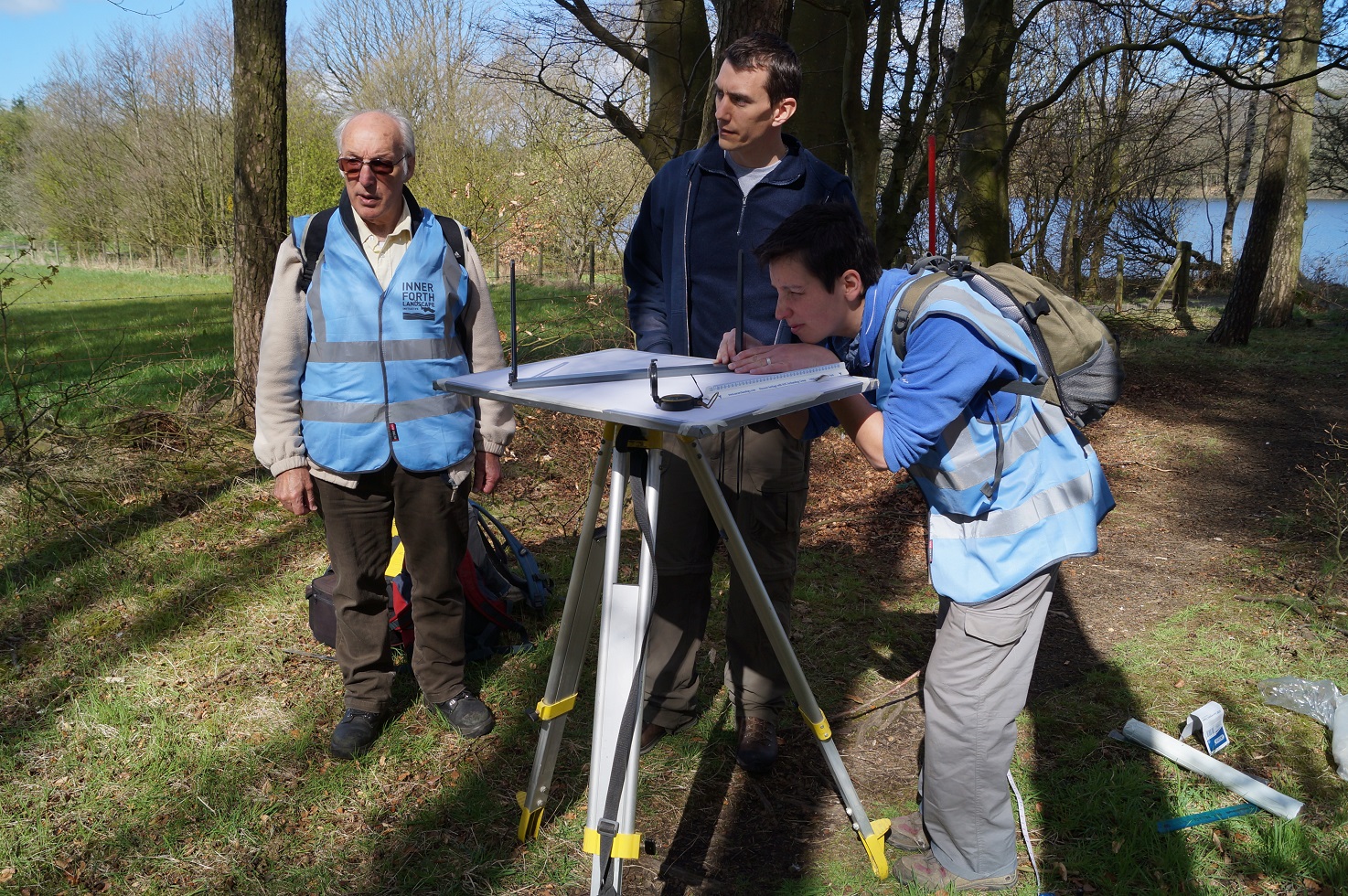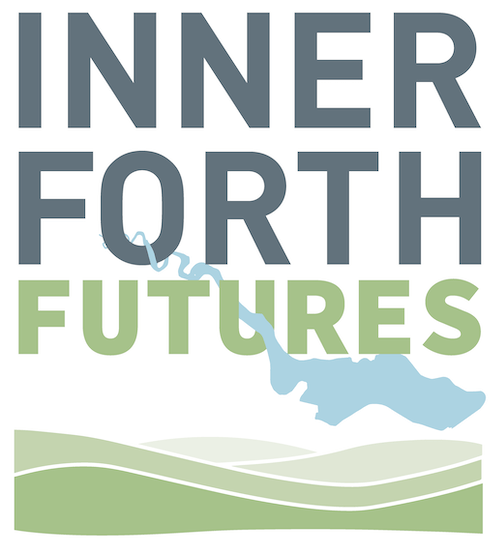A Tale of Two Estates
This project aimed to help connect communities around the former Alloa and Clackmannan estates with their fascinating past, and capture recent memories of Clackmannan Tower, Alloa Tower, Alloa House and the wider landscape.
Throughout the project, volunteers were trained to undertake research into the 17th-19th century industrial and trading heritage of the area and its two ports. There were a large number of individual historical sources - maps, estate papers, books and newspaper articles - as well as many physical features still visible on the ground today. The project supported a wide range of activities: desk-based study; survey training workshops; field survey and photography; oral history recording; school and community group engagement; geophysical survey; excavations; guided walks; talks; and the production of displays, leaflets and trail guides (in association with other agencies). Much of the training was delivered by way of the separate Researching Your Local Heritage project.
All volunteers were covered by a public liability insurance scheme and the costs of any necessary materials and out of pocket expenses were met by the project. All meetings, exhibitions, outings and training were free.
COLLIERY WAGGONWAYS: In August 2014 Clackmannanshire Fields Studies Society began working in collaboration with the Clackmannan Development Trust on the Colliery Waggonway aspect of the Tale of Two Estates project. This involved surveying the once extensive networks of colliery waggonways in Clackmannanshire. There were two main, interconnected networks, started about 1760. The Alloa waggonway ran from the Devon Colliery (near Fishcross) to Alloa Harbour; and the Clackmannan waggonway ran from the Devon Ironworks (again near Fishcross) to Clackmannan Harbour. Each of these two networks had extensive branches leading to pits at Coalsnaughton, Gartmorn, Gubber Hill, Whinhill and Grassmainston and had numerous connections to the mainline railway system.
There were also three separate wagon ways connecting several Coalsnaughton pits to Tillicoultry, the Caroline pit at the edge of the river Devon to Alva and the Kilbagie factory and small coal and ironstone pits to the harbour at Kennetpans.
The report on this first phase of work is available to download: Clackmannanshire Colliery Waggonways part 1 and part 2. And you can read more about the development of the Alloa waggonways by clicking the link below.

CRAIGRIE AND GARTMORN LADE SYSTEMS: A further tranche of the Tale of Two Estates project was to study the two Clackmannanshire colliery lades. Find out more here: Craigrie and Gartmorn lade systems. Technical reports on both have been published, each in two parts: The Craigrie Lade part 1 and part 2; and the Gartmorn Lade 1690-1890 and 1890-2006. Also published is a report on the status of Forestmill Lade.
In due course, surveys will also be undertaken of related mining settlements - such as Westfield village - as well as harbours and sea walls. Remaining evidence for Alloa and Clackmannan Towers and their associated estates will also be investigated.
POND WOOD: The latest CFSS project has looked into the history of Pond Wood in Alloa, a fish pond created as part of the former Alloa Estate.


The project came to a close on 31st March 2018 with all project targets met, in addition to several others that were agreed during the four years. During the project, 4,474 hours of volunteer time were clocked up, a great feat, well done! Copies of all reports are available via this webpage and Clackmannanshire Field Studies Society trustees are publishing copies of all reports for distribution to local libraries and schools.
If you would like a printed copy of any report, would like to be kept on the CFSS mailing list for future activities, or are interested in arranging an illustrated talk on topics related to this project please email cfss2estates@btinternet.com

